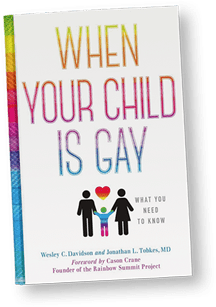It seems that society, or at least Hollywood, is becoming more sexually fluid and doesn’t like their orientation pigeonholed. At the same time, there are more labels for the LGBT population than Starbuck’s has flavors of coffee.
To demystify some of the words and acronyms, here’s a glossary of LGBT terms.
Asexual: A person who generally does not feel sexual attraction or desire to any group of people.
Ally: Usually a non-LGBT person who supports and stands up for the rights of LGBT people.
Binary Gender: Society’s norm assigning gender to either male or female. Some people identify as non-binary and consider themselves neither men nor women. It’s possible to be non-binary and identify outside of the male/female divisions, but still identify with a clear gender identity.
Biphobia: A source of discrimination against bisexuals, and may be based on negative bisexual stereotypes or irrational fear.
Bisexual or “bi”: A person who is attracted to both men and women. It does not mean the person is confused and can’t decide whether he/she is attracted to a man or woman.
Cisgender: Any person who’s physical body matches his gender identity. In other words, an individual’s experience of their own gender matches the sex they were assigned at birth.
Cross Dressers: Previously known as transvestites, don’t associate with the LGBTQ community and don’t see themselves as anything but straight. Think Robin Williams as a nanny in Mrs. Doubtfire or Dustin Hoffman as a female actress in “Tootsie.” Steven Tyler of Aerosmith is another cross dresser.
Drag Queen: They are not usually labelled as crossdresser or transvesites. People that dress in drag tend to be gay such as RUPAUL, the performance artist.
Gay: Should a female who is attracted to women be called gay or lesbian? Gay can be used for any sex (e.g. gay man, gay woman, gay person).
Gender expression: A term which refers to the ways in which we each manifest maculinity or femininity. It is usually an extension of our “gender identity,” our innate, deeply felt psychological identity as male or female such as way we style our hair, our speech, behavior, movement.
Gender Identity: The sense of being male, female, gender queer, agender, etc. Gender identity, biological sex, and sexual orientation are separate and that you cannot assume how someone identifies in one category based on how they identify in another category. Many factors contribute to the formation of gender identity such as society, family, and factors that are in place before birth.
Gender queer: a person who doesn’t feel as if he/she fits into a male or female label. It may also refer to people who identify as both transgendered AND queer.
Intersex: Persons who have some actual externally visible characteristics such as a combination of both male and female sexual organs. It is more common than you think. Statistics place intersexuality at 1.5-2% of the population.
Queer: An umbrella term sometimes used by LGBTQA people to refer to the entire LGBT community. An alternative that some people use to “queer” the idea of the labels and categories such as lesbian, gay, bisexual, etc. Similar to the concept of genderqueer. Some people find the word “queer” offensive.
Questioning: The process of exploring and discovering one’s own sexual orientation, gender identity or gender expression.
Pansexual: A person who experiences sexual, romantic, physical, and/or spiritual attraction for members of all gender identities, not just standard gender binary.
Sex: Not the same as gender. Sex refers to biological differences that include a person’s chromosomes and physical body. Gender refers to the behavioral, cultural, and psychological traits typically associated with one sex.
Sexual orientation: The type of sexual, romantic, and/or physical attraction someone feels toward others. Often labeled based on the gender identity/expression of the person such as lesbian, gay, bisexual, pansexual, etc.
Transgender: An umbrella term referring to all people who do not identify with their assigned gender at birth or the binary gender system. This includes transsexuals, crossdressers, genderqueer, drag kings, drag queens, two-spirit people (American native term) and others. It is not a sexual orientation. Many transgender people identify as heterosexual.
Transphobia: The hatred or fear of transgender people or gender non-conforming behavior. Heterosexual people as well as lesbian, gay, and bisexual people can all exhibit transphobia.
Transsexual: A person whose gender identity is different from their biological sex. He/she may undergo medical treatments to change their biological sex so they can align their sex with their gender identity or they may live their lives as another sex.
Whatever You See In Your Children, Accept
The gender spectrum is vast. As a parent you may have a genderfluid child who has different gender identities at different times.or bigender. It’s possible for your child to feel as if he is two distinct genders at the same time. Or she may identify as agender or free of gender.
Whatever female or male identities your child presents, it can shift over time. Stay tuned and accepting of your child’s gender identity. The popular singer Adele said recently that she could see her baby boy, Angelo, now 3, having a boyfriend when he’s older. She is not only being realistic, but in her outlook, is light years ahead of the thinking of most parents.

When Your Child Is Gay: What You Need To Know
For more detailed advice, see book, co-authored with a mother of a gay son and a psychiatrist, Jonathan L. Tobkes, M.D.